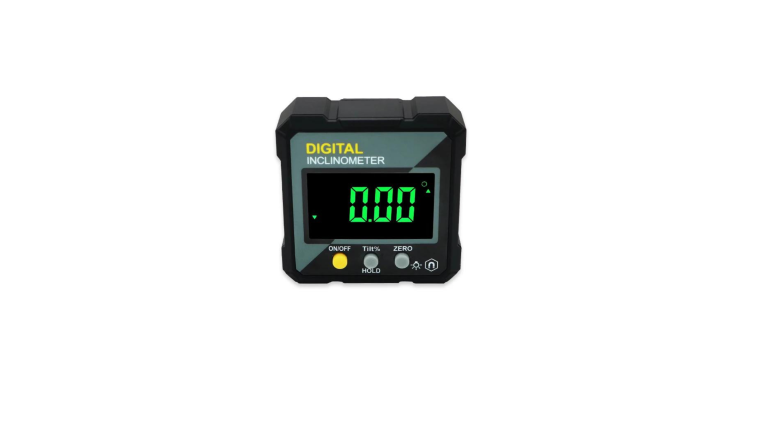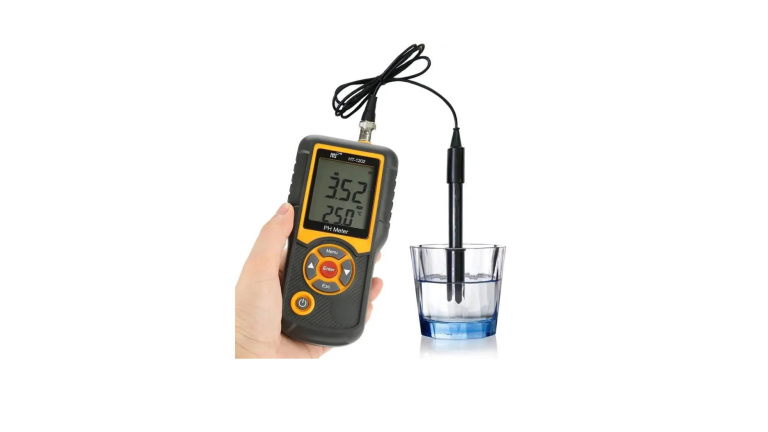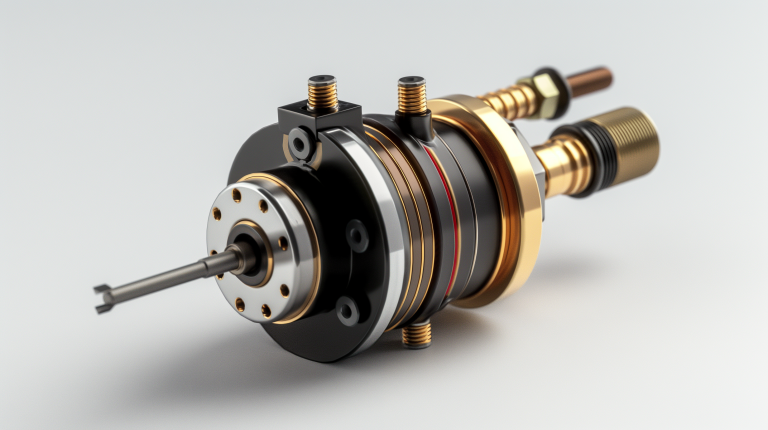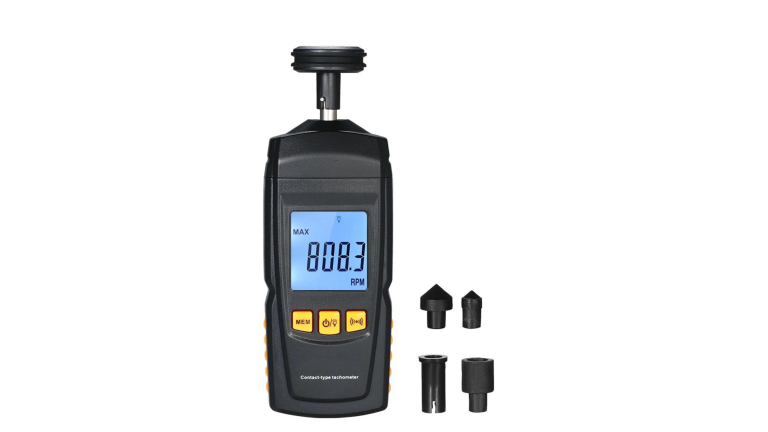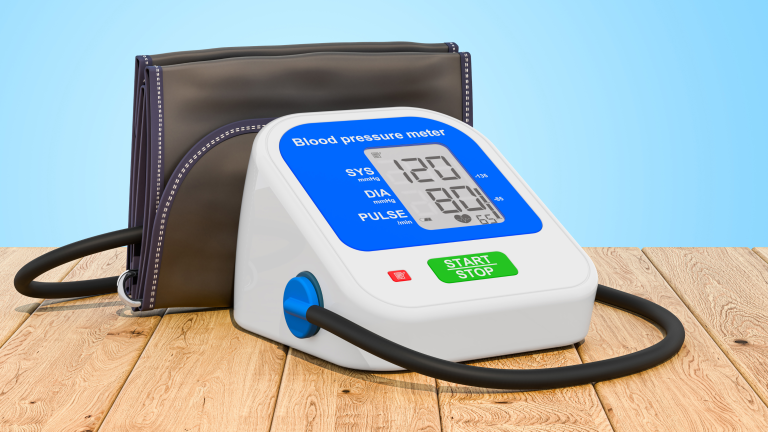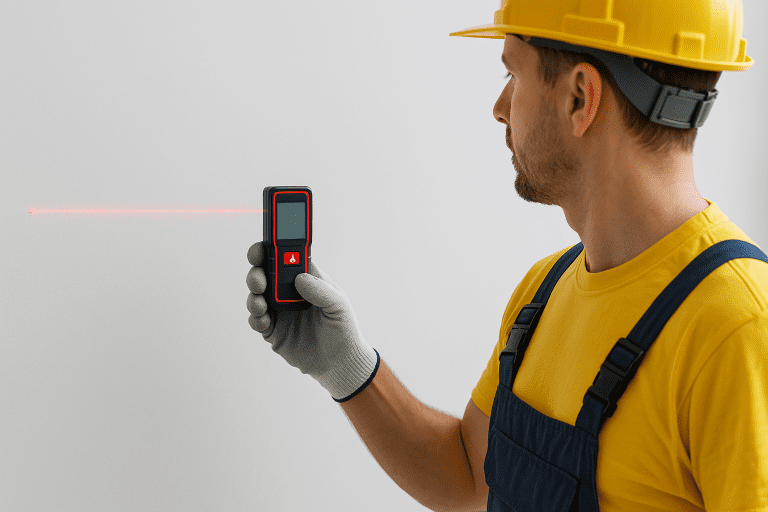
Have you ever wondered how we measure how heavy a liquid feels? It’s not about strength or weightlifting. It’s all about density—how much mass is packed into a space. A hydrometer is the tool that lets us do that. Picture holding a glass tube that floats at different heights in water, beer, or battery acid. That simple float tells you the specific gravity of the liquid. Let’s dive into how a hydrometer works and why it matters in science labs, breweries, and even your car battery.
What Is a Hydrometer?
A hydrometer is a glass instrument that measures liquid density. It’s shaped like a long tube with a weighted bulb at the bottom. When you place it in a liquid, it sinks until the buoyant force equals the weight of the device. The higher the liquid density, the more the hydrometer floats. The lower the density, the more it sinks. The point where the surface of the liquid touches the stem is the specific gravity reading.
The Working Principle of Hydrometer
Buoyancy and Displacement
This tool works on Archimedes’ principle. It states that the buoyant force on an object is equal to the weight of the liquid it displaces. If you push a ball into water, you push aside—displace—some water. That water pushes back. A hydrometer displaces liquid until buoyancy balances its weight. The float height shows you the density.
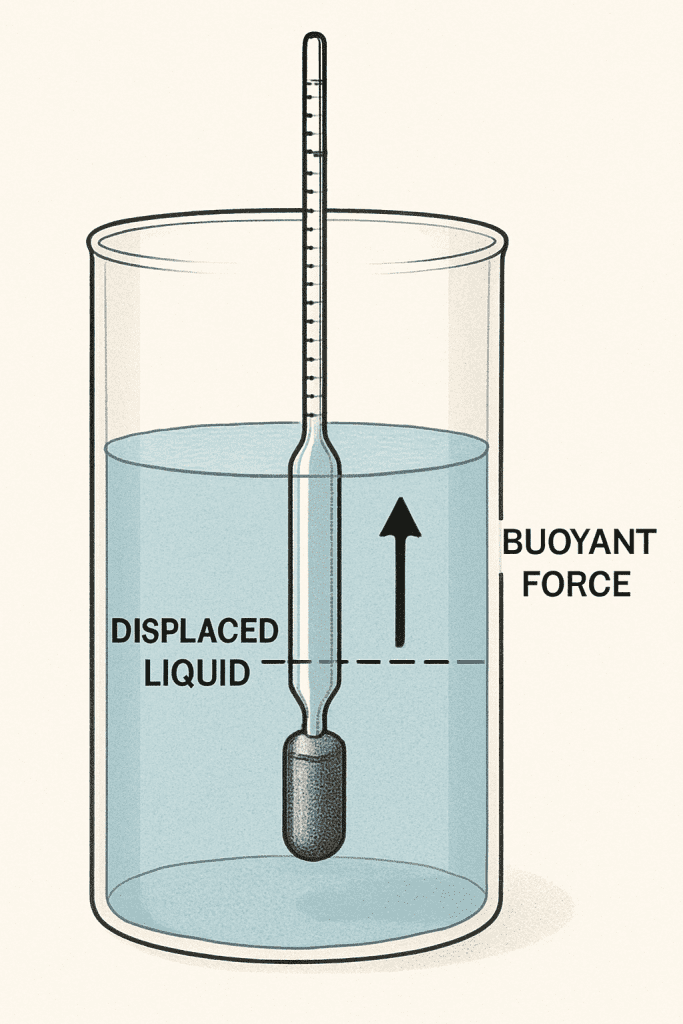
Hydrometer buoyancy principle
Reading the Measurement Scale
The stem of a hydrometer has a measurement scale etched on it. It might show specific gravity, Brix, or Plato values for brewers. You read where the liquid’s surface meets the scale. That gives you the density or sugar content. Always read at eye level. Watch out for the curve of the liquid at the top—that’s the meniscus. Read at the bottom of the curve.
Types of Hydrometers and Where They Shine
Not all hydrometers look the same. Each type fits its job.
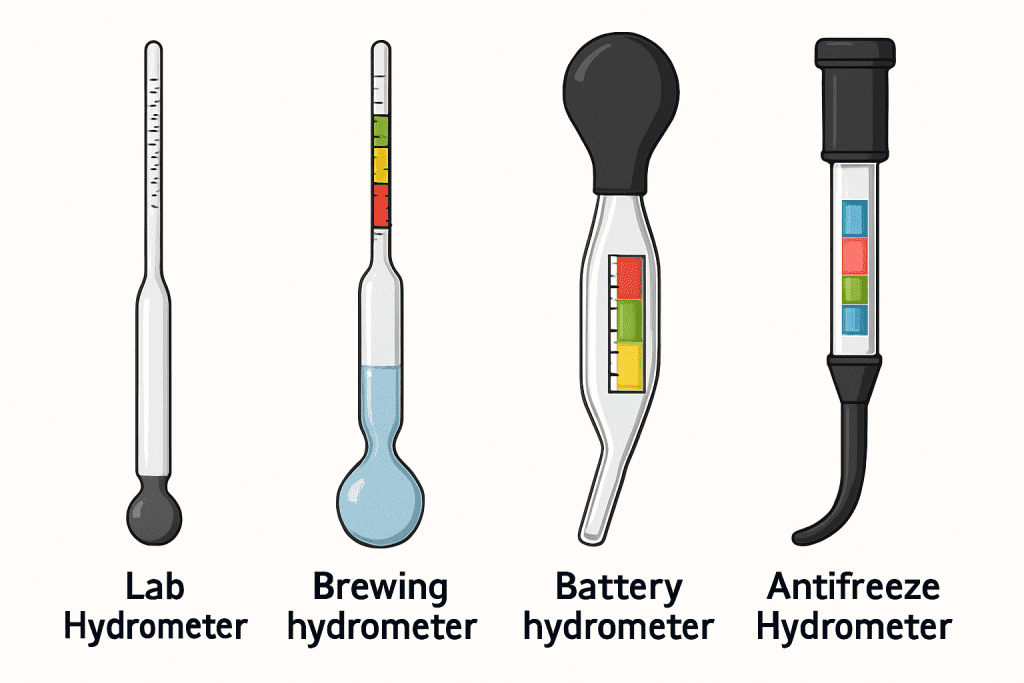
Types of hydrometers for various applications
How to Use a Hydrometer: Step-by-Step Guide
Here’s how to test liquid density like a pro.
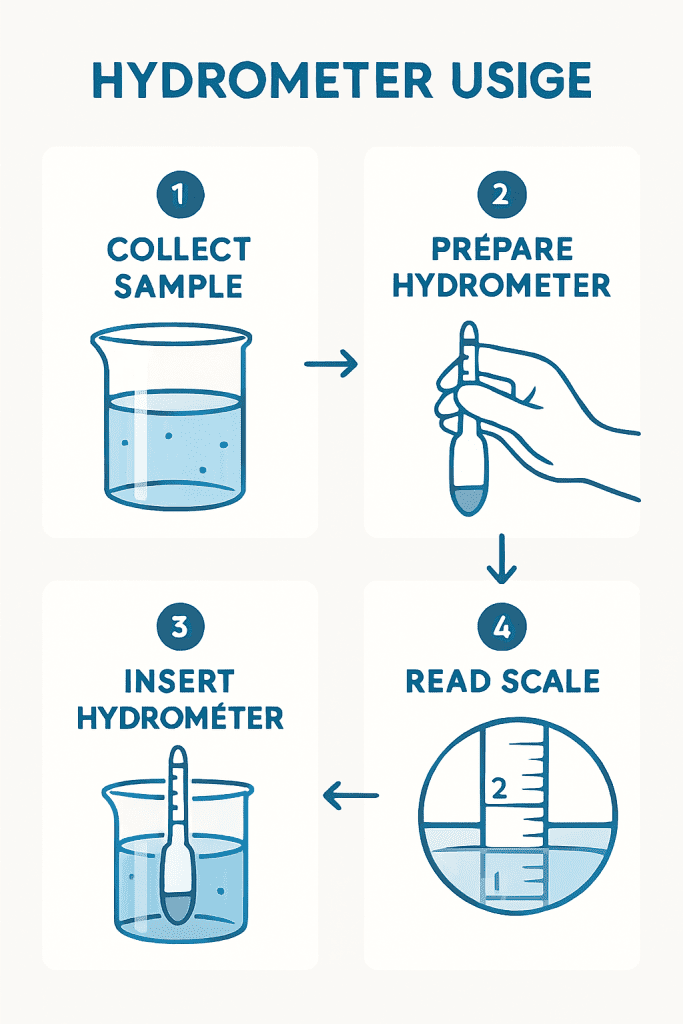
How to use a hydrometer step-by-step
- Prepare the Sample
Rinse your test jar and hydrometer. This removes residues that skew readings. Fill the jar about two-thirds full. Ensure no bubbles cling to the bulb. Bubbles cause errors.
- Check Temperature
Most hydrometers are calibrated at 20 °C (68 °F). Measure your liquid’s temperature. If it differs, apply a correction factor from the hydrometer manual. Liquid temperature effect can skew your reading by 0.001–0.005 specific gravity points per degree.
- Insert the Hydrometer
Gently lower it until it floats freely. Don’t let it touch the jar sides. Watch it settle.
- Read the Scale
At eye level, note where the liquid’s surface touches the stem. That’s your specific gravity. If you see a meniscus curve, read at the bottom.
- Record and Interpret
In brewing, use charts to convert specific gravity to alcohol percentage. In battery testing, compare reading to manufacturer specs: 1.265 is fully charged; 1.120 is discharged.
Real-World Scenarios
Brewing Beer
My friend Mia brews at home. She stirs her wort, cools it to 20 °C, and drops in her specific gravity hydrometer. She logs 1.050. After fermentation, she reads 1.010. Using the formula
ABV=(OG−FG)×131.25
she calculates 5.25% alcohol. Her beer tastes just right.
Wine Fermentation
On my last vineyard tour, I watched the winemaker test grape must with a hydrometer explained in simple steps. She measured Brix values to decide when to press. That perfect sugar level meant balanced sweetness and alcohol.
Automotive Battery Testing
When my car wouldn’t start in winter, the mechanic used a hydrometer function to test the battery. He dipped the float into the electrolyte and read 1.220. That told him the battery was weak but salvageable. He topped it off and it ran twice as long.
Hydrometer vs. Refractometer
It helps to know alternative options:
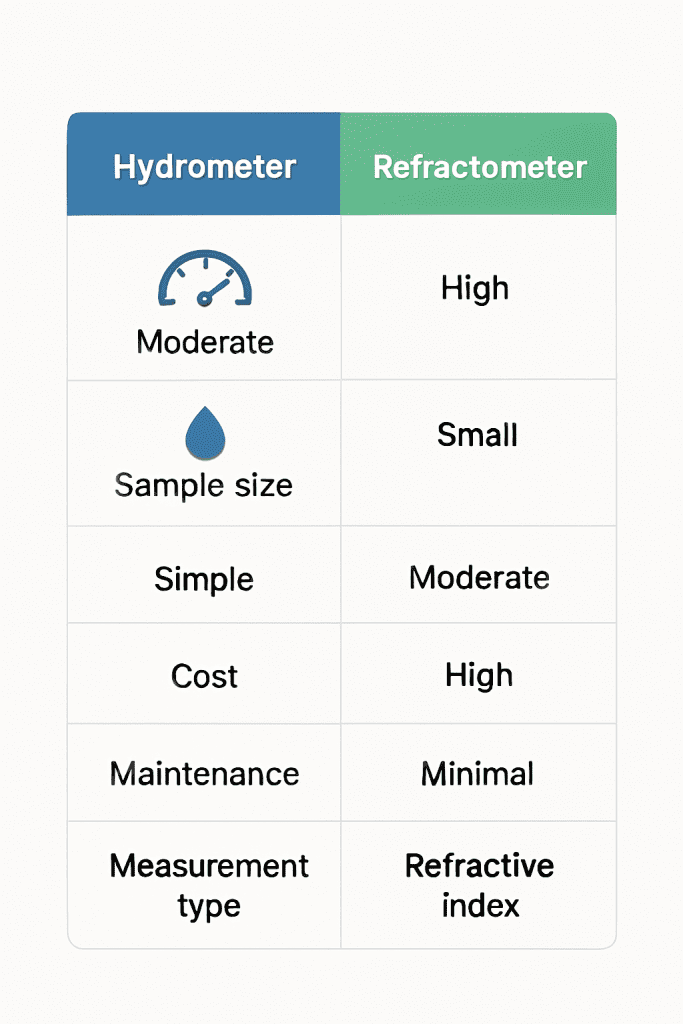
Hydrometer vs. Refractometer comparison
Common Mistakes to Avoid
Calibration and Maintenance
Calibration keeps your tool true. Here’s a quick checklist:
Alternative Measurement Tools and Innovations
If you love tech, consider these:
Expert Tips from Lab Technicians
FAQ Section
Q1. How often should I calibrate my hydrometer?
Calibrate before each major use or at least monthly if you test daily.
Q2. Can I use the same hydrometer for beer and wine?
Yes, if the scale covers both. Otherwise, use a specific brewing or wine hydrometer.
Q3. Why does temperature affect hydrometer readings?
Warmer liquids expand and become less dense. That changes float depth.
Q4. How do I correct hydrometer readings for temperature?
Find the correction chart in your manual and add or subtract the listed value.
Q5. What is the difference between Plato and Brix scales?
Both measure sugar content. Plato is percent weight by volume. Brix is percent sugar by weight.
Measuring liquid density with a hydrometer is simple once you know the hydrometer basics. From the hydrometer in physics labs to use of hydrometer in daily life like brewing beer or testing antifreeze, this tool brings clarity. With the right steps, a clean instrument, and attention to temperature, your hydrometer function will give you precise results every time.

